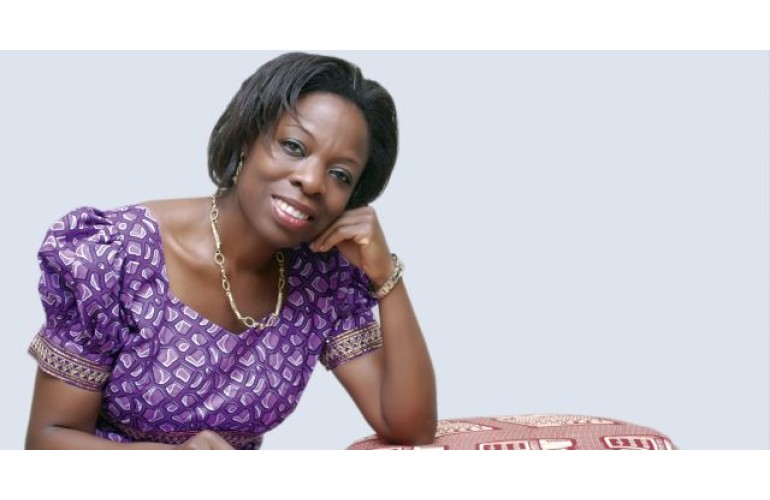 Subscribe
Subscribe- Login
-
/
Sign Up
- US Black Engineer
- >>
- Articles
- >>
- World News
- >>
- Africa
- >>
- Achenyo Idachaba really sees Green
|
Getting your Trinity Audio player ready...
|
Achenyo Idachaba is an American-born entrepreneur. Her TED talk was presented at an official TED conference, featured on the home page, and has had more than 1.7 million views. Below are excerpts from her TED talk:
00:12
Welcome to Bayeku, a riverine community in Ikorodu, Lagos — a vivid representation of several riverine communities across Nigeria, communities whose waterways have been infested by an invasive aquatic weed; communities where economic livelihoods have been hampered: fishing, marine transportation and trading; communities where fish yields have diminished; communities where schoolchildren are unable to go to school for days, sometimes weeks, on end. Who would have thought that this plant with round leaves, inflated stems, and showy, lavender flowers would cause such havoc in these communities.
01:08
The plant is known as water hyacinth and its botanical name, Eichhornia crassipes. Interestingly, in Nigeria, the plant is also known by other names, names associated with historical events, as well as myths. In some places, the plant is called Babangida. When you hear Babangida, you remember the military and military coups. And you think: fear, restraint. In parts of Nigeria in the Niger Delta, the plant is also known as Abiola. When you hear Abiola, you remember annulled elections and you think: dashed hopes. In the southwestern part of Nigeria, the plant is known as Gbe’borun. Gbe’borun is a Yoruba phrase which translates to “gossip,” or “talebearer.” When you think of gossip, you think: rapid reproduction, destruction. And in the Igala-speaking part of Nigeria, the plant is known as A Kp’iye Kp’oma, And when you hear that, you think of death. It literally translates to “death to mother and child.”
02:18
I personally had my encounter with this plant in the year 2009. It was shortly after I had relocated from the US to Nigeria. I’d quit my job in corporate America and decided to take this big leap of faith, a leap of faith that came out of a deep sense of conviction that there was a lot of work to do in Nigeria in the area of sustainable development. And so here I was in the year 2009, actually, at the end of 2009, in Lagos on the Third Mainland Bridge.
02:50
And I looked to my left and saw this very arresting image. It was an image of fishing boats that had been hemmed in by dense mats of water hyacinth. And I was really pained by what I saw because I thought to myself, “These poor fisherfolk, how are they going to go about their daily activities with these restrictions.” And then I thought, “There’s got to be a better way.” A win-win solution whereby the environment is taken care of by the weeds being cleared out of the way and then this being turned into an economic benefit for the communities whose lives are impacted the most by the infestation of the weed. That, I would say, was my spark moment.
03:38
And so I did further research to find out more about the beneficial uses of this weed. Out of the several, one struck me the most. It was the use of the plant for handicrafts. And I thought, “What a great idea.” Personally, I love handicrafts, especially handicrafts that are woven around a story. And so I thought, “This could be easily deployed within the communities without the requirement of technical skills.” And I thought to myself, “Three simple steps to a mega solution.”
04:14
First step: Get out into the waterways and harvest the water hyacinth. That way, you create access.
04:22
Secondly, you dry the water hyacinth stems.
04:26
And thirdly, you weave the water hyacinth into products.
04:32
The third step was a challenge. See, I’m a computer scientist by background and not someone in the creative arts. And so I began my quest to find out how I can learn how to weave.
04:44
And this quest took me to a community in Ibadan, where I lived, called Sabo. Sabo translates to “strangers’ quarters.” And the community is predominantly made up of people from the northern part of the country. So I literally took my dried weeds in hand, there were several more of them, and went knocking from door to door to find out who could teach me how to weave these water hyacinth stems into ropes. And I was directed to the shed of Malam Yahaya. The problem, though, is that Malam Yahaya doesn’t speak English and neither did I speak Hausa. But some little kids came to the rescue and helped translate. And that began my journey of learning how to weave and transform these dried water hyacinth stems into long ropes.
05:35
With my long ropes in hand, I was now equipped to make products. And that was the beginning of partnerships. Working with rattan basket makers to come up with products. So with this in hand, I felt confident that I would be able to take this knowledge back into the riverine communities and help them to transform their adversity into prosperity. So taking these weeds and actually weaving them into products that can be sold. So we have pens, we have tableware, we have purses, we have tissue boxes. Thereby, helping the communities to see water hyacinth in a different light. Seeing water hyacinth as being valuable, being aesthetic, being durable, tough, resilient. Changing names, changing livelihoods.
Click here to listen
Achenyo Idachaba is the head of MitiMeth, a Nigeria-based company that makes handicrafts from aquatic weeds and other agro-waste.


